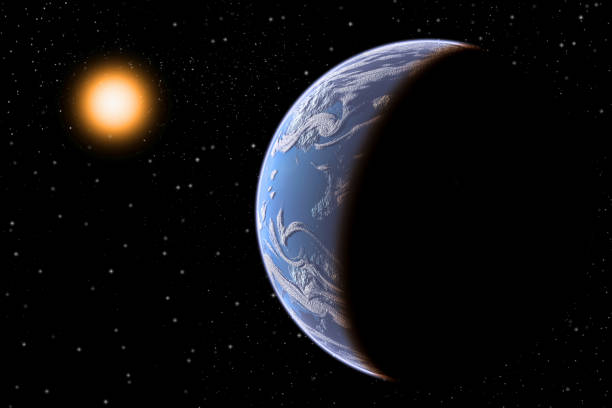Kepler-452b: An Earth-like planet light-years away from us
Peter Bui. 04/16/2021

Kepler-452b is a planet that exists light-years away from us. The planet can and most likely once did support life. But what exactly does this planet have to offer? Are there any downsides that may disrupt the possibility of the planet supporting life?
To begin with, Kepler-452b is an exoplanet located 1,402 light-years away from Earth. Its appearance is similar to Earth, having an atmosphere, water and land. And similar to how the Earth has the sun, Kepler-452b orbits around Kepler-452, a star 6 billion years old, which is pretty old in comparison to the solar system’s sun, aged 4.5 billion years. But Kepler-452 has around the same temperature as the sun, which can support the idea that Kepler-452b can still harbor life. Whether or not it has a moon is unknown as of now.
While it may sound bizarre that Kepler-452b and Earth are similar, it’s true. Other than the facts stated previously, what other aspects do both planets have? First off, water. Last year, water was discovered on Mars. This was a huge discovery because it hints that Mars once supported life. But Kepler-452b is an especially unique case because it has lakes, rivers and pools. There were once oceans, but unfortunately, all of them have dried up. Unlike Mars, the atmosphere might be actually breathable. The air on Mars is 100 times thinner than that of Earth, compared to Kepler-452b where the air is pretty similar to that of Earth. However, this topic is still in debate because we do not know what is in the air, especially if there is something more dangerous in it than Earth’s nitrogen and oxygen. The temperature on Kepler-452b is slightly warmer than Earth but is still as livable as a warm day on Earth. The appearance, as mentioned, is almost exactly the same. The majority of the outside view is blue, indicating water, with patches of land. Both orbit around a star that is roughly the same temperature and have clouds. But just because they are similar in a handful of aspects doesn’t mean Kepler-452b is Earth. In fact, they are pretty different in quite a few ways.
First off, the sun of Kepler-452b or Kepler-452contrasts with our sun. Kepler-452 is also 20% brighter than the sun, as well as 11% larger. The terrain of Kepler-452b is rocky, which is different from Earth’s variety of landforms. Not only are the landforms bigger, Kepler-452b is actually 60% larger in diameter, meaning it is 1.6 times bigger than Earth. The gigantic size difference between both planet and exoplanet is what gives Kepler-452b the title of a Super-Earth. The exoplanet is also rather massive, having 5 times as much mass as the Earth. The surface gravity is about 2 times as much as the gravity on Earth, resulting in jumping being twice as hard. A complete revolution on the Earth, 365 days, is considered a year. For Kepler-452b however, it takes 385 days to complete a full revolution around its star, resulting in a 385 day year. Earth has “only” existed for 4.54 billion years, but Kepler-452b is estimated to have the age of 6 billion!
Kepler-452b is by no means Earth. Earth has all of our needs: natural fruits and vegetables, food sources such as meat, oceans for trade— the full bundle. Kepler-452b has a handful of that. Whether or not Kepler-452b has life or had life is not known yet. The question of whether humans can live on this planet, even if they did bring their own supply, is in debate. The temperature is nice, sure, but is the environment habitable? Will the air have any metals that are potentially lethal or just not safe? Can it really harbor human life? The short answer for this is yes, no, maybe so. We do not know if the planet has everything we need, but one thing can be sure: it comes really close to that point, with water, land, weather and all. Maybe someday in the future, we’ll know for sure.
In conclusion, Kepler-452b is more or less similar to Earth. In fact, there are dozens upon dozens of Kepler planets! Kepler is a NASA mission to discover hundreds of Earth-like planets, and to this point up to 24 potential exoplanets may be even better than the conditions of Earth, but of all of them Kepler-452b will always be one of the likeliest candidates, and for good reason too! However, although all these amazing planets have been found, remember that they are not in our solar system, and by no means within reach. Being thousands of light-years is too far for human travel, and all purposes of looking for them are merely to answer the question “Are we alone in this universe?” or “Are there others like us?”. So even though planets as amazing as Kepler-452b and all of the other exoplanets are out there, the chance of actually inhabiting one of the candidates is near impossible. However, it is important to know that somewhere out there, such an amazing planet actually exists.
Cover Photo: (NASA / Ames / JPL-Caltech)
